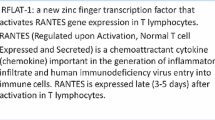Abstract
In this paper, we propose a multiobjective optimization (MOO) based technique to determine the appropriate weight of voting for each class in each classifier for Named Entity Recognition (NER). Our underlying assumption is that reliability of predictions of each classifier differs among the various named entity (NE) classes. Thus, it is necessary to quantify the amount of voting for each class in a particular classifier. We use Maximum Entropy (ME) as the base to generate a number of classifiers depending upon the various feature representations. The proposed algorithm is evaluated for a resource-constrained language like Bengali that yield the overall recall, precision and F-measure values of 79.98%, 82.24% and 81.10%, respectively. Experiments also show that the classifier ensemble identified by the proposed multiobjective based technique outperforms all the individual classifiers, three different conventional baseline ensembles and an existing single objective optimization based approach.
Access this chapter
Tax calculation will be finalised at checkout
Purchases are for personal use only
Preview
Unable to display preview. Download preview PDF.
Similar content being viewed by others
References
Cunningham, H.: GATE, a General Architecture for Text Engineering. Computers and the Humanities 36, 223–254 (2002)
Babych, B., Hartley, A.: Improving Machine Translation Quality with Automatic Named Entity Recognition. In: Proceedings of EAMT/EACL 2003 Workshop on MT and other Language Technology Tools, pp. 1–8 (2003)
Moldovan, D., Harabagiu, S., Girju, R., Morarescu, P., Lacatusu, F., Novischi, A., Badulescu, A., Bolohan, O.: LCC Tools for Question Answering. In: Text REtrieval Conference, TREC 2002 (2002)
Nobata, C., Sekine, S., Isahara, H., Grishman, R.: Summarization System Integrated with Named Entity Tagging and IE Pattern Discovery. In: Proceedings of Third International Conference on Language Resources and Evaluation (LREC 2002), Spain (2002)
Goldberg, D.E.: Genetic Algorithms in Search, Optimization and Machine Learning. Addison-Wesley, New York (1989)
Ekbal, A., Saha, S.: Weighted Vote Based Classifier Ensemble Selection Using Genetic Algorithm for Named Entity Recognition. In: Proceedings of 15th International Conference on Applications of Natural Language to Information Systems (NLDB 2010), Cardiff, Wales, UK, pp. 256–267 (2010)
Deb, K.: Multi-objective Optimization Using Evolutionary Algorithms. John Wiley and Sons, Ltd., England (2001)
Ekbal, A., Bandyopadhyay, S.: A Web-based Bengali News Corpus for Named Entity Recognition. Language Resources and Evaluation Journal 42(2), 173–182 (2008)
Florian, R., Ittycheriah, A., Jing, H., Zhang, T.: Named Entity Recognition through Classifier Combination. In: Proceedings of the Seventh Conference on Natural Language Learning at HLT-NAACL 2003 (2003)
Tjong Kim Sang, E.F., De Meulder, F.: Introduction to the CoNLL-2003 Shared Task: Language Independent Named Entity Recognition. In: Proceedings of the Seventh Conference on Natural Language Learning at HLT-NAACL 2003, pp. 142–147 (2003)
Ekbal, A., Bandyopadhyay, S.: Voted NER System using Appropriate Unlabeled Data. In: Proceedings of the 2009 Named Entities Workshop: Shared Task on Transliteration (NEWS 2009), ACL-IJCNLP 2009, pp. 202–210 (2009)
Deb, K., Pratap, A., Agarwal, S., Meyarivan, T.: A Fast and Elitist Multiobjective Genetic Algorithm: NSGA-II. IEEE Transactions on Evolutionary Computation 6(2), 181–197 (2002)
Ekbal, A., Bandyopadhyay, S.: Web-based Bengali News Corpus for Lexicon Development and POS Tagging. POLIBITS 37, 20–29 (2008)
Anderson, T.W., Scolve, S.: Introduction to the Statistical Analysis of Data. Houghton Mifflin (1978)
Author information
Authors and Affiliations
Editor information
Editors and Affiliations
Rights and permissions
Copyright information
© 2010 Springer-Verlag Berlin Heidelberg
About this paper
Cite this paper
Ekbal, A., Saha, S., Garbe, C.S. (2010). Multiobjective Optimization Approach for Named Entity Recognition. In: Zhang, BT., Orgun, M.A. (eds) PRICAI 2010: Trends in Artificial Intelligence. PRICAI 2010. Lecture Notes in Computer Science(), vol 6230. Springer, Berlin, Heidelberg. https://doi.org/10.1007/978-3-642-15246-7_8
Download citation
DOI: https://doi.org/10.1007/978-3-642-15246-7_8
Publisher Name: Springer, Berlin, Heidelberg
Print ISBN: 978-3-642-15245-0
Online ISBN: 978-3-642-15246-7
eBook Packages: Computer ScienceComputer Science (R0)




